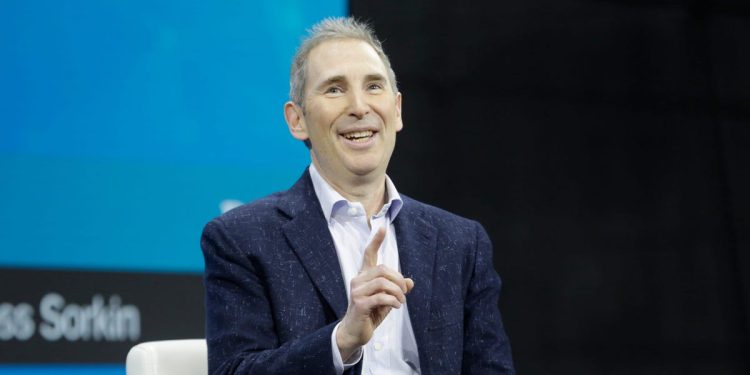Amazon has pink projections for its Rufus AI sales assistant.
According to an internal planning document obtained by Business Insider, Amazon expects Rufus to indirectly contribute more than $ 700 million in operating profit this year.
The prospects are part of a metric called “downstream impact”, an internal financial figure that Amazon uses to measure the potential of a product or service to generate additional consumption expenses through the vast offers of Amazon.
For example, Rufus products recommendations can cause more purchases on the Amazon market – and an increase in CIO. Rufus, a free service that responds to everything, from product details to special promotions, does not generate any direct income.
Based on this metric, Rufus lost around $ 285 million in 2024. By 2027, however, it should reach $ 1.2 billion in the DSI, according to the document. Estimates, after operating costs and server payments include income from the advertisements placed in Rufus responses to user requests.
Handy forecasts can explain why Amazon aggressively widens Rufus and its other AI research offers. Amazon management previously told employees that such AI projects are “absolute” priorities.
Rufus, launched in February 2024, received mixed criticism from the first users, but Amazon continues to invest in this space. Last week, Amazon unveiled another shopping discovery application fueled by AI called interests. Last year, the company revealed that Rufus had answered “tens of millions” of customer questions in its first six months of operation.
He also shows how Amazon justifies his investment in one of his flagship IA products, even if DSI recently received a more meticulous examination.
The Amazon spokesperson refused to comment.
“Positive lifte on downstream expenses”
Admittedly, DSI Rufus DSI forecasts are low for Amazon, given the $ 68.6 billion in the company’s operating profit last year. But the first results indicate that Rufus has enormous potential with more space to grow.
The document said that the initial results have shown that customers using RUFUS have a “positive elevation on downstream expenses”, and the impact only increased with more commitment.
Amazon has important expansion plans for Rufus.
This year, Amazon expects $ 711.7 billion in its site to be eligible for the many Rufus features, such as product recommendations and comparisons, against $ 164 billion in 2024, according to the document. This number should reach $ 849.8 billion in 2027.
Amazon also wants to deploy Rufus on at least 13 international markets this year, according to the document. Currently, Rufus is available in the United States, the United Kingdom and India, and a handful of European countries.
RUFUS AI sales assistant from Amazon Amazon
The document said that Amazon was planning to withdraw the size of the AI model fueling Rufus, called internally, to improve the quality of its responses. The increase in the parameters of the LLM shopping model was also taken into account in DSI, but it is not known when it is implemented. With the planned improvement, Amazon hopes to launch a new service that operates Rufus to provide a wider selection and “buy perfectly on behalf of the customer,” he added.
Rufus already becomes more widespread on Amazon. In recent weeks, some Amazon sellers who have used the Rufus application have discovered an update that Rufus automatically update when using trigger sentences like “how” or “what is” in the search bar.
For some products, Rufus was automatically launched with its own response before the search results are displayed. Amazon also started testing adweek answers, Adweek reported in September.
‘Customize more’
Amazon is not the only retailer with a local AI store assistant. Others, such as Walmart, Target and Instacart, have launched their own research applications powered by AI in recent months.
These applications can always be in their infancy. A recent survey carried out by the Electronic Commerce Analysis company Takeno has shown that only 10% of American customers used an AI chat assistant from a retailer when searching for products. In comparison, 37% of buyers used the search bar on websites or retailer applications, and 29% used promotion and transaction pages.
For Rufus, the other challenge is negative criticism.
Andrew Hamada, a former Amazon employee who now runs the Reason Automation sellers agency, wrote on LinkedIn last month that Rufus is missing basic information in the catalog and often gives inaccurate responses.
“From our experience, Rufus rarely works,” he wrote.
There is also the question of the true DSI value.
The Amazon CIO is not the most scientific metric, and several Amazon employees who spoke under the guise of anonymity because they were not allowed to speak to the press, have raised questions about blurred mathematics behind the figures.
For example, it has never been clear if the Amazon shipping video was to claim more CIO for Prime membership income, which offers two services, said one of the people. Recently, Amazon exceeded the metric DSI of Alexa, previously reported the Wall Street Journal.
However, Amazon’s retail CEO Doug Herrington remains a fervent supporter of Rufus. During an internal meeting all hands earlier this year, Herrington said that “personalization” led by AI is a major area of intervention for Amazon, mentioning Rufus and other research features as examples.
“AI really allows us to personalize the shopping experience on Amazon more and more,” said Herrington.
Do you work at Amazon? Do you have a tip? Contact this journalist by email to ekim@businessinsider.com or signal, telegram or WhatsApp at 650-942-3061. Use a personal email address and a non-work device; Here is our guide to share information safely.
businessinsider



